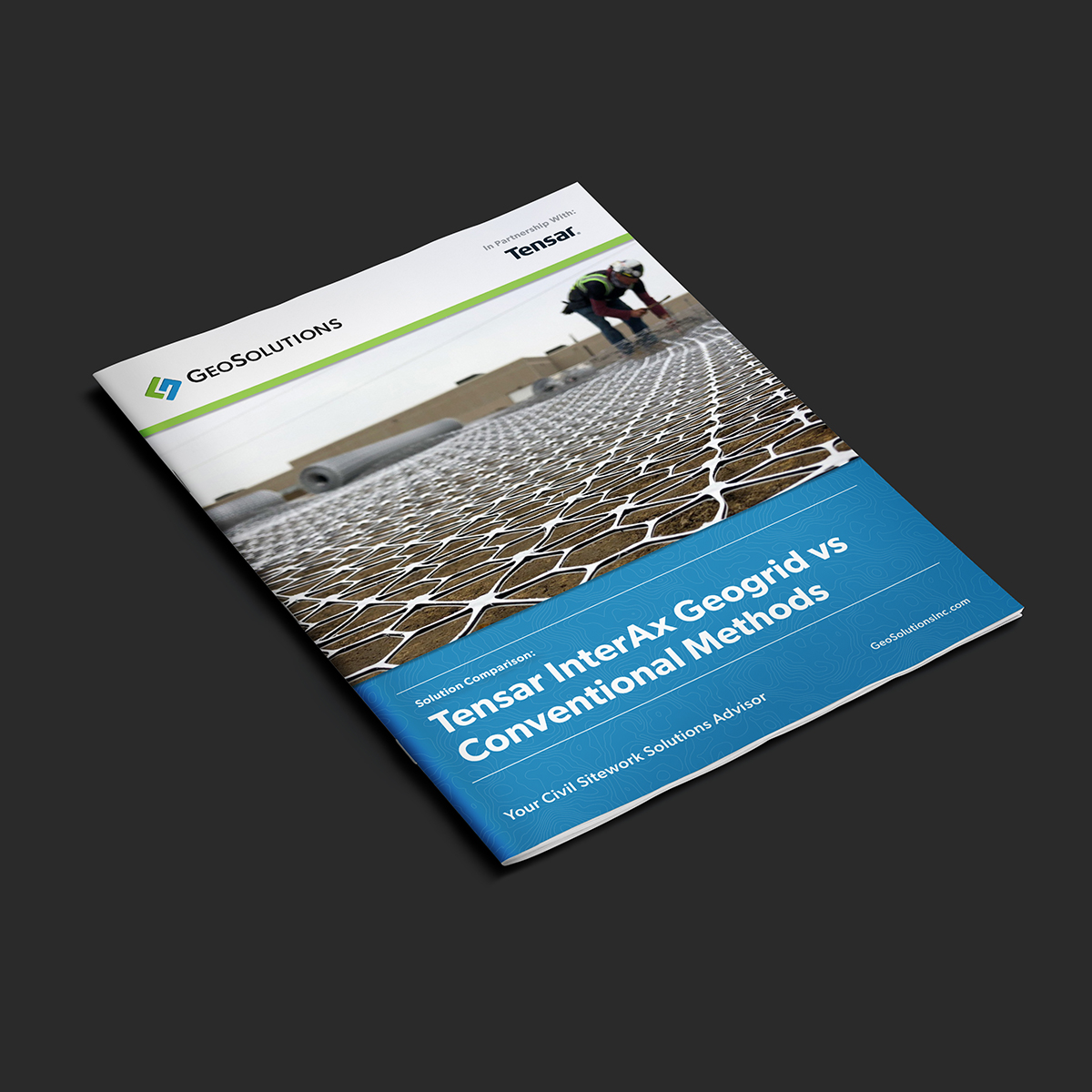
Asphalt Interlayer Applications & Product Selection Process
Designing pavements with longer lifespans at a lower cost can be difficult for engineers looking to deliver the best possible performance for every dollar invested. Unfortunately, high traffic loading, environmental conditions, and inadequate drainage constantly challenge the functional lifespan of your pavements. Since 1965, the asphalt pavement interlayers have had an outstanding record of improving pavement performance while reducing maintenance and roadway life-cycle costs. This blog post will explore the various applications for asphalt interlayers and how to select the right interlayer for your pavement.
Thanks to the evolution of new materials and geosynthetic products over the last 60 years, a range of geosynthetic products have evolved and are used as the reflective crack barrier beneath new asphalt overlays, now commonly referred to as an interlayer. As a result, asphalt interlayers play an essential role in protecting and maintaining our roads and highways. Interlayers extend the life of new asphalt pavements and overlays. When placed between layers of asphaltic concrete (AC), these systems become an integral part of the roadway section, forming a barrier to water infiltration and absorbing stresses to reduce reflective and fatigue cracking of the new asphalt surface layer. Learn more about waterproofing & reflective cracking mitigation with asphalt interlayers Here.
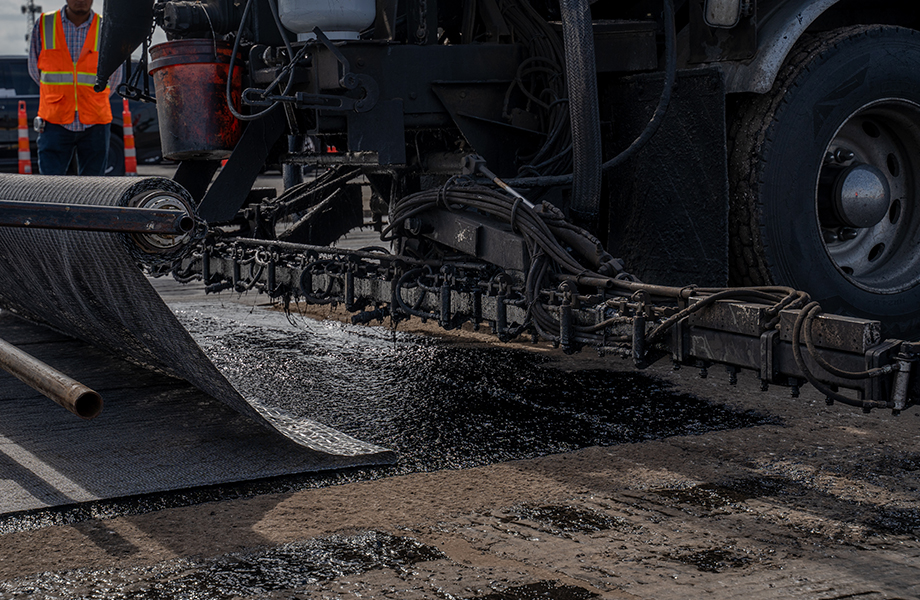
Asphalt Interlayers are used in a variety of applications including:
• Airports
• Ports
• Interstate/State Routes
• Principal/Major/Minor Arterials
• Collectors
• Local Roads and Lots
• Fabric Reinforced Chip/Cape Seals
Interlayers extend the life of asphalt overlays when installed properly on an existing pavement substrate by reducing stress, creating a waterproof barrier, and reinforcing the new asphalt layer. Concern for reflective cracking is the most common reason why interlayers are used, and so, knowing which product to select, amongst a variety of crack distress and traffic conditions is crucial to your project’s success. The identification of pavement distress types is an essential component to the proper selection of an asphalt interlayer.
Properly identifying the type of pavement deterioration can tell us a lot about the source, as well as what type of interlayer can best influence the challenge at hand. Contact your GEO Pro to schedule a free site visit for distress identification and a free project evaluation. Request
Anytime environmental cracking can be identified, there is a great opportunity to influence the section with interlayers. Transverse, Block and Oxidation cracks are among the most commonly defined environmental crack types. When identifying structural cracking, longitudinal and alligator cracking are both great candidates for interlayers. When it comes to freeze-thaw or expansive soil cracking, interlayers are likely to have conditional success and should be further investigated. These scenarios are typically treated with a moisture barrier to reduce the impact water might have on your pavement section.
When identifying structural cracking, longitudinal and alligator cracking are both great candidates for interlayers. When it comes to freeze-thaw or expansive soil cracking, interlayers are likely to have conditional success and should be further investigated. These scenarios are typically treated with a moisture barrier to reduce the impact water might have on your pavement section.
Many public sector engineers and private owners recognize the value of rehabilitating an existing jointed concrete pavement with an asphalt overlay. Unfortunately, an asphalt wearing course placed atop jointed concrete is susceptible to premature cracking due thermal expansion and contraction as well as traffic loading. High strength, high performance fiberglass-based interlayers are an excellent means to mitigate reflective cracking from the underlying pavement joint to the asphalt surface. The modulus properties of the fiberglass effectively intercept the horizontal stresses and distribute them within the matrix of the interlayer.
Like any building material, both asphalt and concrete are prone to expand or contract as ambient temperatures rise and fall throughout the year. Just like our skin as we age, asphalt will oxidize and become more brittle as it is exposed to the elements for multiple seasons and years. In time, asphalt will strain and eventually exhibit cracking due to both the aging process and thermal movements. Asphalt interlayers provide a stress barrier to retard the propagation of these thermal cracks through an overlay by virtue of the same mechanisms defined above.
Another common application for asphalt interlayers is for “connecting” an existing pavement with a new one. Lane widening is a common practice to expand traffic capacity whereby additional lanes are added to an in-service roadway. Oftentimes, this introduces a “cold joint” between the new pavement and old pavement that will quickly exhibit a crack based on the natural consolidation of the new pavement and underlying subgrade upon being exposed to traffic. In this case, fiberglass interlayers are an excellent means to tie the existing asphalt wearing course to the new pavement through load transfer.
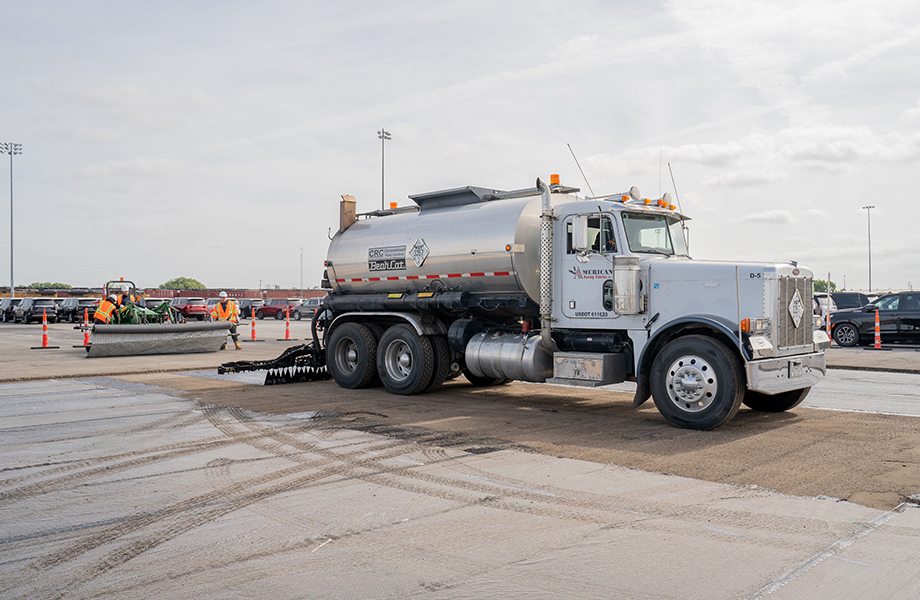
Asphalt interlayers are becoming increasingly popular for pavement projects because they offer several advantages over traditional asphalt pavement. Asphalt interlayers can be installed using a variety of methods, by hand for very small areas, and using laydown tractors for high production larger projects. This flexibility makes it easy to install asphalt interlayers on a variety of different types of pavement surfaces. Asphalt interlayers are also less susceptible to damage from freeze-thaw cycles, making them an ideal choice for pavements in cold climates. In addition, asphalt interlayers can significantly extend the life of a pavement by protecting the underlying layers from the effects of traffic and weathering.
Over the years, our industry has evolved significantly in recognizing the importance of quality control of product installation. Asphalt interlayers are unique in their installation relative to other geosynthetic products (geogrids, geotextiles, etc.). It is essential that you align with a contractor that is qualified and certified to install asphalt interlayers based on criteria that has been recently defined by the Geosynthetic Materials Association (GMA). These contractors are experienced with the best practices that are necessary to assure the product performance is not compromised by a poor installation. GeoSolutions has partnered with American Paving Fabrics ( APF ) to provide you with a trusted team and proven solution for ensuring your pavement's success and long-term performance without straining your budget. American Paving Fabrics is a leading installer of geosynthetics and one of only a few nationally-certified interlayer installation contractors in the United States.
To select the correct interlayer and maximize the benefit that can be provided, it is important to understand the type and cause of the pavement distress.
When selecting your asphalt interlayer, consider the following:
• Identify suitability by type of crack/distress
• Amount and depth of cracks.
• Thermal movement due to extreme heat, moisture, or freeze-thaw.
• Traffic loads and traffic counts (i.e. major highway, residential street, parking lot, etc.)
• Rate of deterioration and base condition.
Once you have documented and evaluated your pavement history and level of distress it's necessary to understand how each asphalt interlayer can impact your objectives.
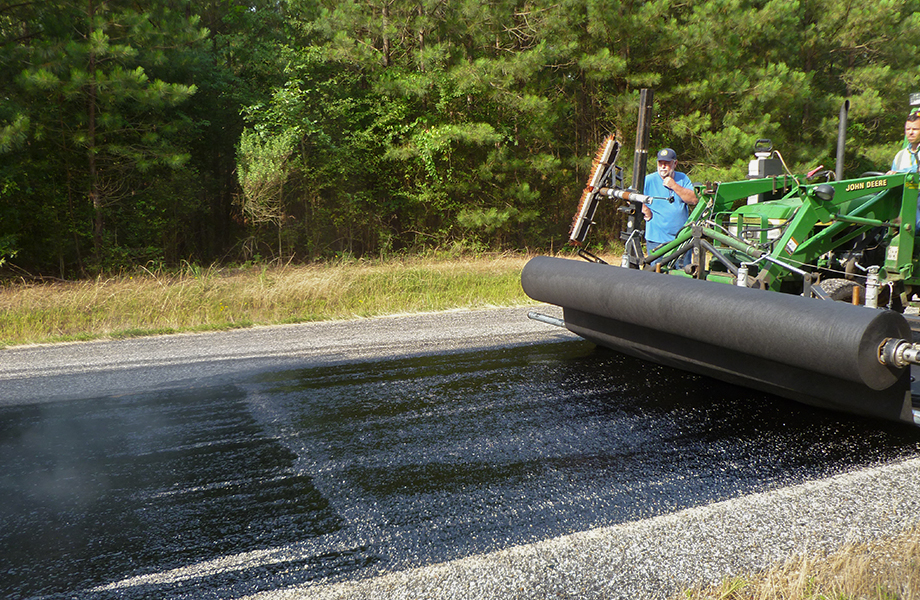
Product Selection
Asphalt interlayers come in many different forms that each perform unique functions:
Paving fabrics – generally, these products are non-woven polypropylene geotextiles that retain sufficient liquid asphaltic tack to render a waterproofing layer between the existing asphalt substrate and new overlay
Paving mats – these products consist of both a paving geotextile and fiberglass matrix to provide both waterproofing and stress relief, generally deployed for light to medium duty roadways
Paving grids – a well established product for the rehabilitation of medium to heavy duty (high traffic counts and loading) are paving grids. These products consist exclusively of high strength fiberglass strands rendering a biaxial orientation, grid-type structure applied to an asphalt “level up” course prior to placement of the overlay. Some paving grids are self-adhesive materials while others require a tack coat for proper installation.
Paving Geocomposites – Composite products consist typically of a fiberglass grid (biaxial or multiaxial) woven into a non-woven geotextile. Like paving mats, the geotextile layer is intended to retain liquid asphalt tack coat for waterproofing purposes while the fiberglass interacts with the horizontal distresses to mitigate reflective cracking.
Peel-and-stick mastics – these products are generally constructed of high density asphalt mastic bitumen between a top layer of heat resistant reinforcing fabric and a bottom layer of fabric. Peel-and-stick mastics are used to reinforce and waterproof pavement cracks and joints, and they are used to reduce reflective cracking of asphalt concrete overlays on localized cracking and spalling (joint cracking, repair of potholes, etc.). Unlike each of the interlayer types described above, the mastic products are “partial coverage” coverage while most provide full coverage (curb to curb).
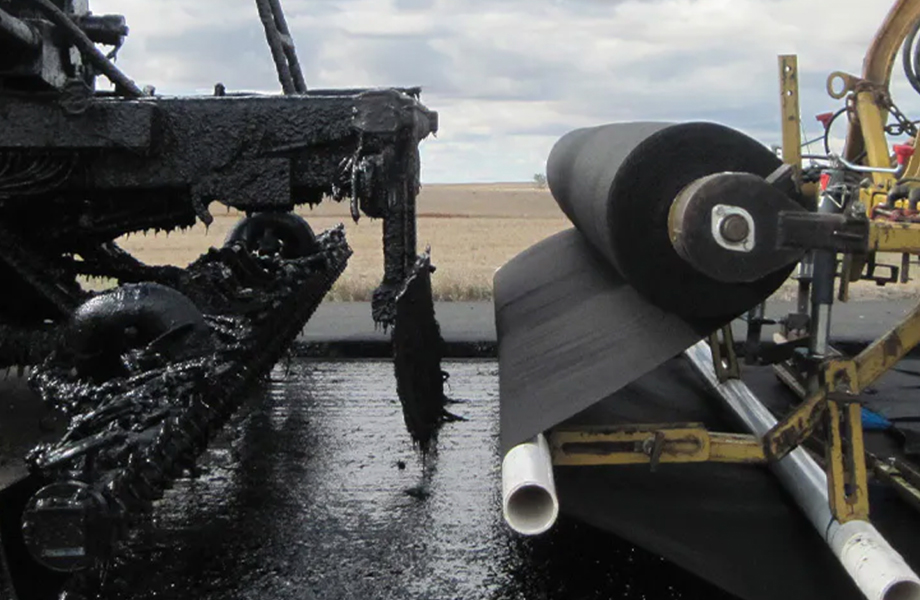
Additional tips when selecting interlayers
Selecting an interlayer that provides a moisture barrier when installed provides the greatest
protection against pavement deterioration by preserving the aggregate base structural value. This will also almost eliminate the need for future patching.
Selecting an interlayer that provides efficient, high tensile reinforcement will achieve the highest level of crack delay and reduced crack severity. Extend pavement life by increasing point load distribution, limiting elongation of cracking, and improving flexural strength.
At GeoSolutions, we believe you deserve a team of registered professionals, industry-leading innovators, and access to proven solutions to provide you and your clients the clarity and confidence you deserve for your pavement overlay projects. We understand that it can be challenging to know which product is best for your project. That's why we offer a free project evaluation service. Let us look at your specific situation and recommend the best asphalt interlayer for your needs. Avoiding reflective cracking is essential for the safety of drivers and pedestrians, so don't wait – submit your free project evaluation today!
Always be the first to know about new products, resources, and tools that impact our industry and your performance.
Download our free PDF resource to identify how Tensar InterAx Geogrid can reduce cost and install time while improving your subgrade stabilization design's life and performance.
